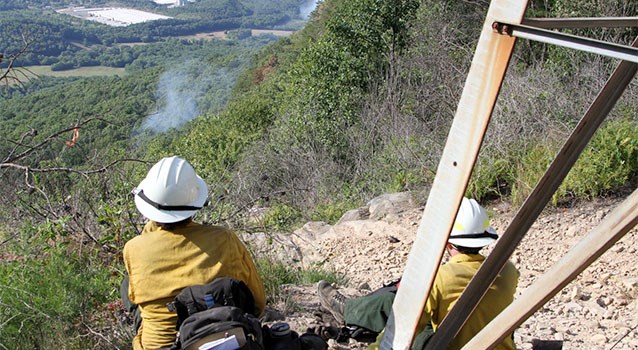Last updated: August 20, 2025
Article
Firefighting Orders and Watch Out Situations
The 10 Standard Firefighting Orders were developed in 1957 by a task force studying ways to prevent firefighter injuries and fatalities. Shortly thereafter, the 18 Situations That Shout Watch Out were developed. These 18 situations are more specific and cautionary than the Standard Firefighting Orders. If firefighters follow the 10 Standard Firefighting Orders and are alerted to the 18 Watch-Out Situations, much of the risk of firefighting can be reduced.

NPS
10 Standard Firefighting Orders
Fire Behavior
- Keep informed of fire weather conditions and forecasts.
- Know what the fire is doing at all times.
- Base all actions on current and expected behavior of the fire.
Fireline Safety
- Identify escape routes and safety zones and make them known.
- Post lookouts when there is possible danger.
- Be alert. Keep calm. Think clearly. Act decisively.
Organizational Control
- Maintain prompt communications with your forces, your supervisor, and adjoining forces.
- Give clear instructions and be sure they are understood.
- Maintain control of your forces at all times.
If 1-9 are considered, then...
- Fight fire aggressively, having provided for safety first.
18 Fire Watch-Out Situations
- Fire not scouted and sized up.
- In country not seen in daylight.
- Safety zones and escape routes not identified.
- Unfamiliar with weather and local factors influencing fire behavior.
- Uninformed on strategy, tactics, and hazards.
- Instructions and assignments not clear.
- No communication link with crew members or supervisor.
- Constructing line without safe anchor point.
- Building fireline downhill with fire below.
- Attempting frontal assault on fire.
- Unburned fuel between you and fire.
- Cannot see main fire; not in contact with someone who can.
- On a hillside where rolling material can ignite fuel below.
- Weather becoming hotter and drier.
- Wind increases and/or changes direction.
- Getting frequent spot fires across line.
- Terrain and fuels make escape to safety zones difficult.
- Taking a nap near fireline.
